You are using an out of date browser. It may not display this or other websites correctly.
You should upgrade or use an alternative browser.
You should upgrade or use an alternative browser.
Bore cut felling?
- Thread starter komatsuvarna
- Start date

Help Support Arborist Forum:
This site may earn a commission from merchant affiliate
links, including eBay, Amazon, and others.
Some power companies here in Sweden demands that that all trees is felled this way cause they think its the safest way to fell trees around power lines and railways !!
And here is why.
http://www.picshag.com/show.php?f=pics/052010/sweden-then-and-now-big.jpg
GASoline71
Mr. Nice Guy
HAHAHAHAHA! 
Gary

Gary
SWE#Kipp
Addicted to ArboristSite
Yep that must be it
Gypo Logger
Timber Baron
Next time I'm in the bush, I'll play around with the plunge cut just for chits and giggles, however, I honestly think that by the time one has plunged, the tree could have been on the ground using traditional felling cuts.
Whether plunging gives more control over the run of the mill tree, I doubt. Leaners yes.
Most plunging we've seen so far has been in open areas. I wonder how the upstart plunger would make out in a select cut situation?
John
Whether plunging gives more control over the run of the mill tree, I doubt. Leaners yes.
Most plunging we've seen so far has been in open areas. I wonder how the upstart plunger would make out in a select cut situation?
John
GASoline71
Mr. Nice Guy
Even when I have used the plunge/bore on heavy head leaners... I'm at the stump longer than I really wanna be.
I usually use a Coos Bay instead...
Gary
I usually use a Coos Bay instead...
Gary
Gypo Logger
Timber Baron
When I was cutting bigger and more valuable hardwood timber, I didn't mind taking my time to ensure I didn't down grade the butt log with shatter or fibre pull.
On a heavy leaner like Oak, which seem to lean the most, I'd make a nice low undercut, plunge behind the hinge, saw lil ears on each side and blast thru the remaining backcut.
The tree always falls extremely fast.
Gary, what is the Coos Bay? Sounds interesting.
John
On a heavy leaner like Oak, which seem to lean the most, I'd make a nice low undercut, plunge behind the hinge, saw lil ears on each side and blast thru the remaining backcut.
The tree always falls extremely fast.
Gary, what is the Coos Bay? Sounds interesting.
John
coastalfaller
ArboristSite Operative
Even when I have used the plunge/bore on heavy head leaners... I'm at the stump longer than I really wanna be.
I usually use a Coos Bay instead...
Gary
I'll bite, Gary, what's a Coos Bay?!
Gypo Logger
Timber Baron
Google Coos Bay Felling Cut, I did and I still don't get it.I'll bite, Gary, what's a Coos Bay?!
John
Hi John, Sometimes arboristsite search trumps google.
http://www.arboristsite.com/showpost.php?p=2121485&postcount=47
http://www.arboristsite.com/showpost.php?p=2121485&postcount=47
hammerlogging
Addicted to ArboristSite
boring
I know I've posted some of these before.
here's a boring stump, easy way to make sure all is nice and clean:

A boring red oak. Some trees youn can't pull, its not worth trying, and you have to bore.

A humboldt, backcut, saw next to stump, me tucked back for protection.... sidehill, lovin it.

Have as least boring Thanksgiving as possible.
I know I've posted some of these before.
here's a boring stump, easy way to make sure all is nice and clean:
A boring red oak. Some trees youn can't pull, its not worth trying, and you have to bore.
A humboldt, backcut, saw next to stump, me tucked back for protection.... sidehill, lovin it.
Have as least boring Thanksgiving as possible.
Nailsbeats
Addicted to ArboristSite
A Coos Bay cut is for a very heavy head leaner. The kind you need to put on the ground safely without much concern for fiber pull.
With no face cut, cut the "ears" out of the backcut about 1/3 of the diameter (or as much as you can without prematurely releasing the tree or pinching your bar) on each side of the tree. Then with high chainspeed burry that backcut (in line with your two ear cuts) straight through until it goes. It will usually rip and tear a bit, which it why I like to put a bit of an undercut into the combination if I can. Seems to come off cleaner.
This can be used in the tree also on heavy limbs, note though that there isn't much control since a definite hinge hasn't been created.
With no face cut, cut the "ears" out of the backcut about 1/3 of the diameter (or as much as you can without prematurely releasing the tree or pinching your bar) on each side of the tree. Then with high chainspeed burry that backcut (in line with your two ear cuts) straight through until it goes. It will usually rip and tear a bit, which it why I like to put a bit of an undercut into the combination if I can. Seems to come off cleaner.
This can be used in the tree also on heavy limbs, note though that there isn't much control since a definite hinge hasn't been created.
Nailsbeats
Addicted to ArboristSite
A Coos Bay cut is for a very heavy head leaner. The kind you need to put on the ground safely without much concern for fiber pull.
With no face cut, cut the "ears" out of the backcut about 1/3 of the diameter (or as much as you can without prematurely releasing the tree or pinching your bar) on each side of the tree. Then with high chainspeed burry that backcut (in line with your two ear cuts) straight through until it goes. It will usually rip and tear a bit, which it why I like to put a bit of an undercut into the combination if I can. Seems to come off cleaner.
This can be used in the tree also on heavy limbs, note though that there isn't much control since a definite hinge hasn't been created.
It is really a cool cut to play around with and have in your bag of tricks. Sorry, didn't realize I quoted myself.
RandyMac
Stiff Member
I'm bored, somebody put up some falling pics.
GASoline71
Mr. Nice Guy
I'll bite, Gary, what's a Coos Bay?!
I use the "Triangle" on the right. and it can be used with a Humboldt face. I've done it.
Dent also explains it in his book if you can decipher it.
Gary
Last edited:
A Coos Bay cut is for a very heavy head leaner. The kind you need to put on the ground safely without much concern for fiber pull.
With no face cut, cut the "ears" out of the backcut about 1/3 of the diameter (or as much as you can without prematurely releasing the tree or pinching your bar) on each side of the tree. Then with high chainspeed burry that backcut (in line with your two ear cuts) straight through until it goes. It will usually rip and tear a bit, which it why I like to put a bit of an undercut into the combination if I can. Seems to come off cleaner.
This can be used in the tree also on heavy limbs, note though that there isn't much control since a definite hinge hasn't been created.
This is how I learned a Coos Bay cut, no face.
coastalfaller
ArboristSite Operative
I use the "Triangle" on the right. and it can be used with a Humboldt face. I've done it.

Dent also explains it in his book if you can decipher it.
Gary
Gotcha! Here, with no undercut, it's called a "westcoaster"!
Slamm
Addicted to ArboristSite
Bore Cut Heavy Leaner (White Oak)
Went heavy on the hinge so it wouldn't sit on my bar. Then just came in the back on the backstrap and "popped it" and over she went. I should have nipped the sides of the hinge a little, as you can see I tore some of the stump out, which is better than the butt of the log.
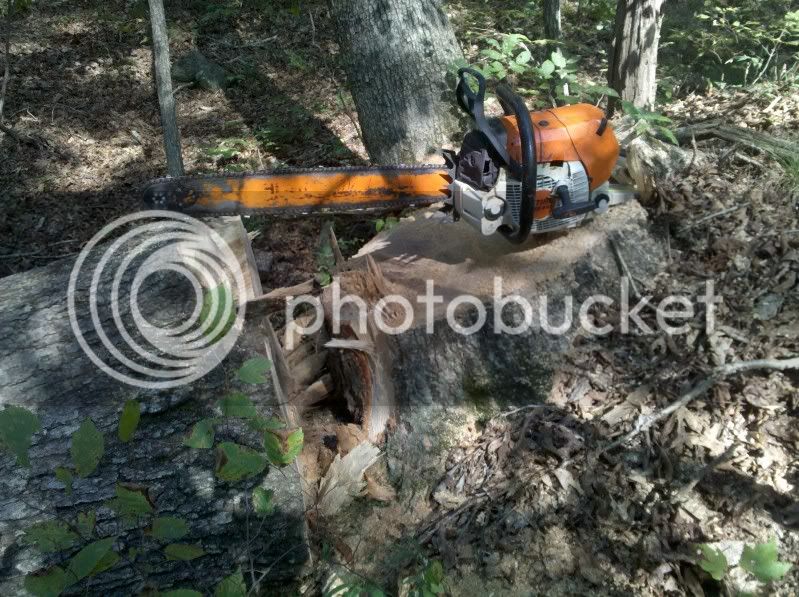
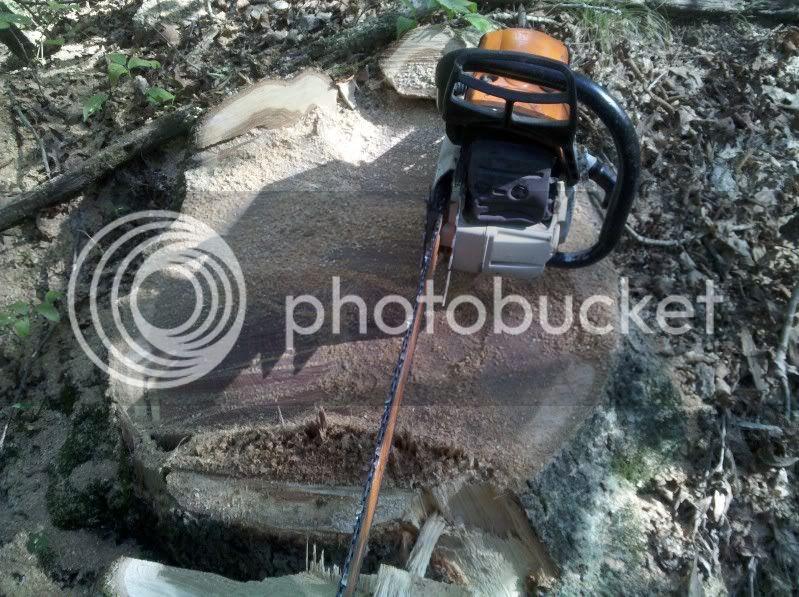
Here are some very nice white oaks, I bore cut low and laid them right where I wanted them to go. No wedges were used.
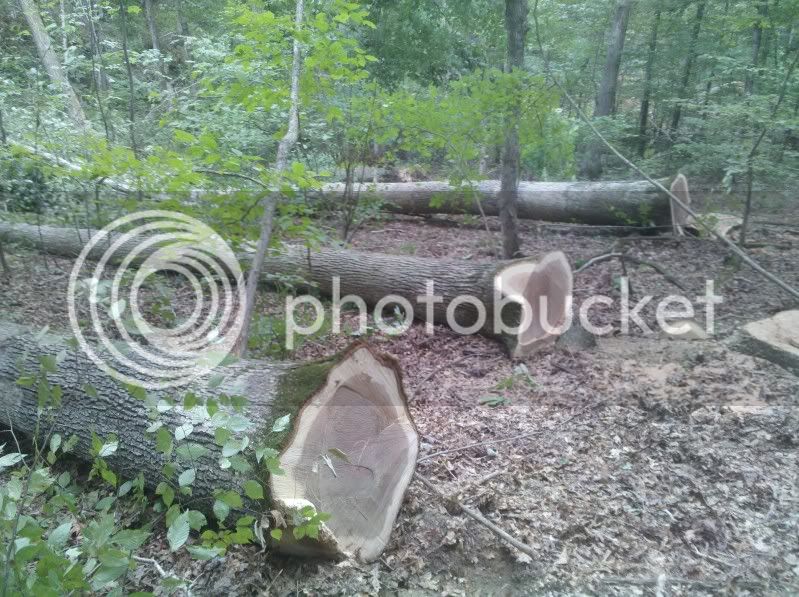
More:

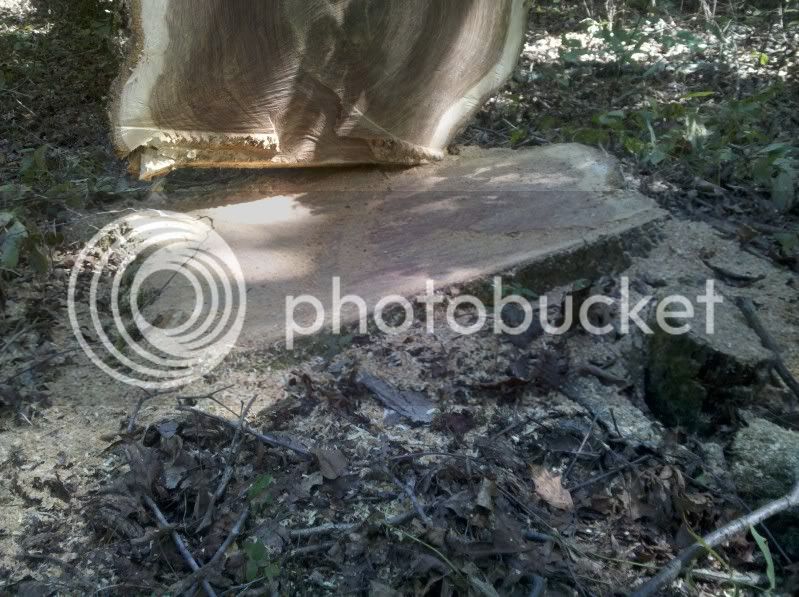
Went heavy on the hinge so it wouldn't sit on my bar. Then just came in the back on the backstrap and "popped it" and over she went. I should have nipped the sides of the hinge a little, as you can see I tore some of the stump out, which is better than the butt of the log.


Here are some very nice white oaks, I bore cut low and laid them right where I wanted them to go. No wedges were used.

More:


Slamm
Addicted to ArboristSite
This Red Oak was a very hard leaner and pretty big:
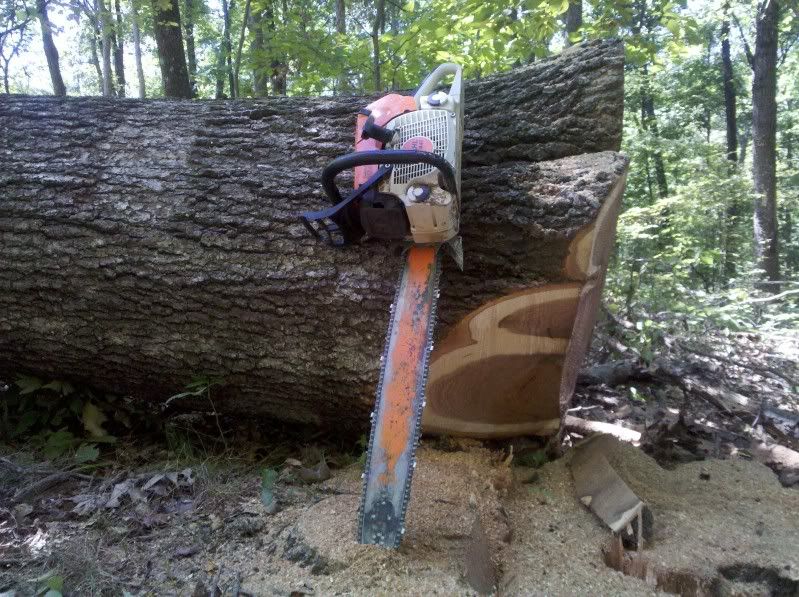
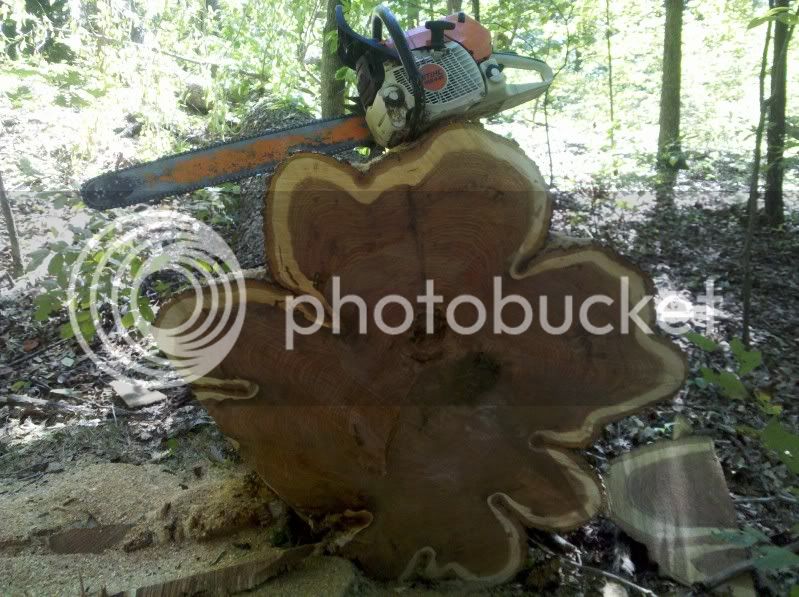
Humbolt with a bore cut to finish it, I high cut it because it had wire in it:
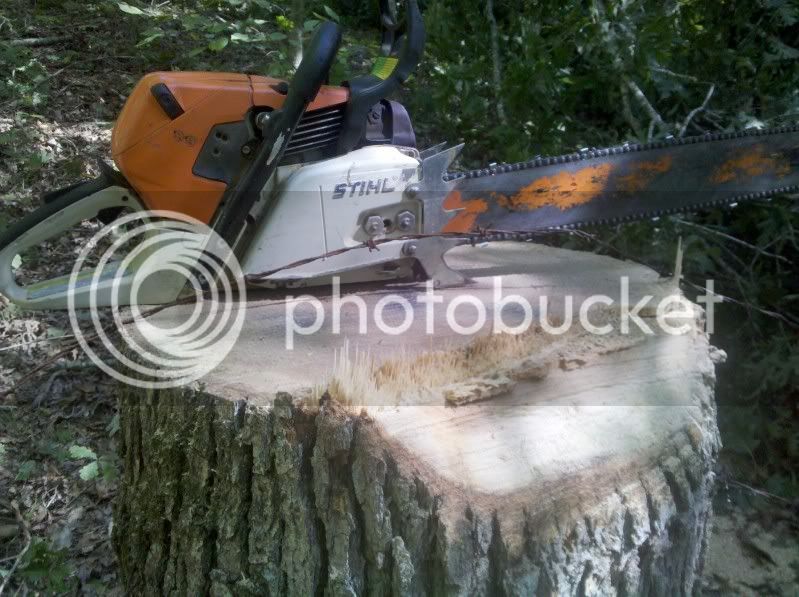
The humbolt shot the butt down the hill so as to not snap the log.
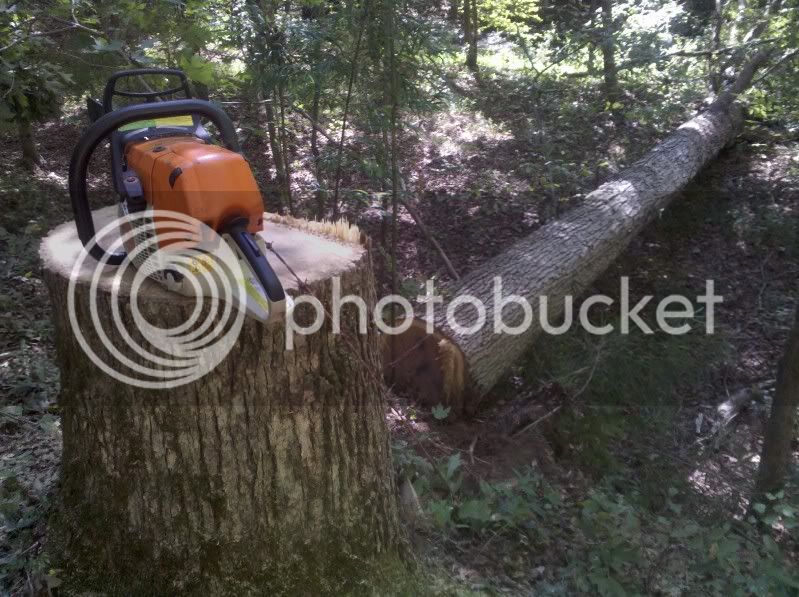
Low cut this one and the uphill side of the stump is actually below the ground level, Oh and I side hilled it too boot, LOL:
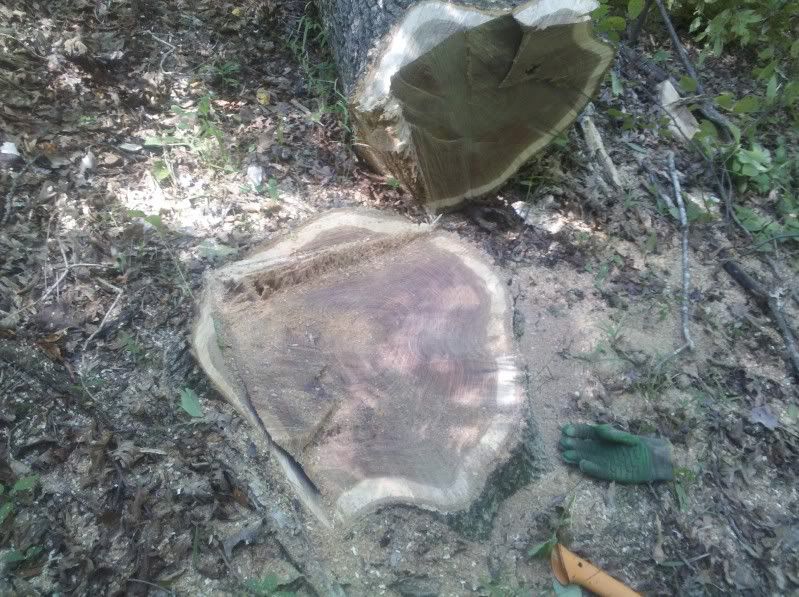
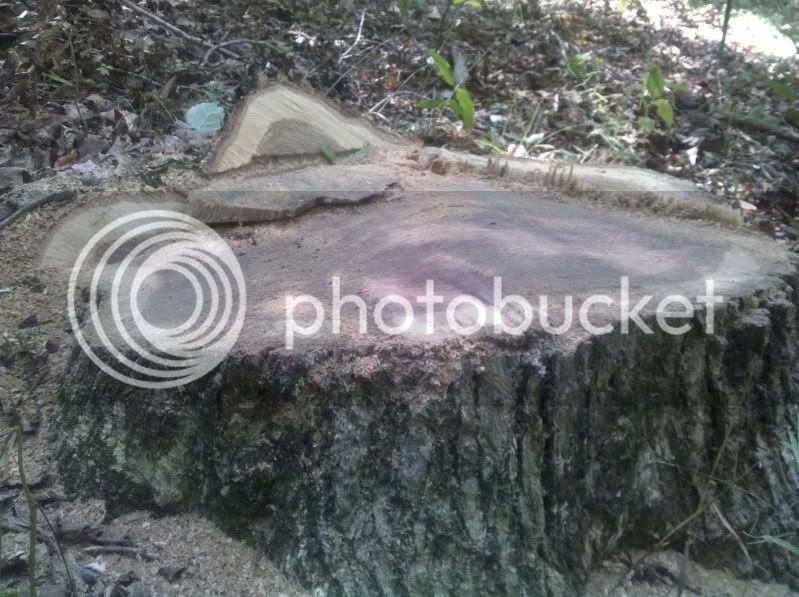
Later,
Sam


Humbolt with a bore cut to finish it, I high cut it because it had wire in it:

The humbolt shot the butt down the hill so as to not snap the log.

Low cut this one and the uphill side of the stump is actually below the ground level, Oh and I side hilled it too boot, LOL:


Later,
Sam
hammerlogging
Addicted to ArboristSite
Nice Slamm. Thats like the timber and ground where my very first falling work was, But can you call it sidehill when its flat???? Just fitfully admiring your good ground! I find it tough to get a clean hinge if I have to bore a humboldt, so damn hard to see th hinge you've made... so if i have to bore it I'll conventional or open face it, but you sure seemed to pull it off. Great.
Just fitfully admiring your good ground! I find it tough to get a clean hinge if I have to bore a humboldt, so damn hard to see th hinge you've made... so if i have to bore it I'll conventional or open face it, but you sure seemed to pull it off. Great.
Similar threads
- Replies
- 17
- Views
- 2K
- Replies
- 7
- Views
- 2K



